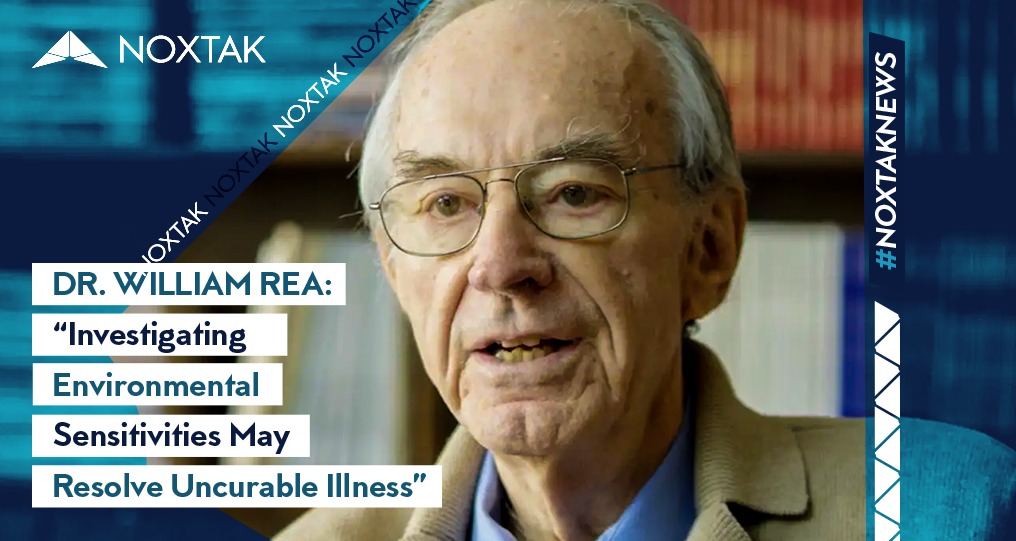Dr. Rea’s years of investigation and positions on environmental sensitivities paved the way for many new investigations nowadays.

Dr. William James Rea was a thoracic, cardiovascular, and general surgeon with an added interest in the environmental aspects of health and disease. He was born in Jefferson, Ohio, on February 2, 1935, and passed away at 83 on August 16, 2018, in Dallas, Texas.
He was the Director of the Environmental Health Center Dallas and the President of the American Environmental Health Foundation. He formerly held the First World Professorial Chair in Environmental Medicine at the Robens Institute at the University of Surrey, in Guildford, Surrey, England, as well as other teaching appointments.
Dr. Rea published many articles on Cardiovascular Surgery and Environmental Medicine and he went on to write 10 books which included medical textbooks on Environmental Medicine. He also wrote two books on electromagnetic frequency (EMF), which he completed before passing. He also coauthored a consumer title focused on the effects of the environment on health.
Environmental medicine
Rea was one of the foremost practitioners of environmental medicine. At his former clinic, the Environmental Health Center-Dallas, no cell phones are allowed and the air is constantly filtered. The walls and floors are made of porcelain because, according to Rea, there are no fumes and particulates, and other non-reactive surfaces such as unvarnished wood. The clinic has been open since 1974.
Dr. William Rea treated more than 30,000 patients over 40 years. He developed a comprehensive protocol for treatment and diagnosis. His approach aimed at decreasing the “total body load” of all toxins and toxic chemicals, injections to neutralize mycotoxins, avoidance of foods and chemicals to which patients may have become sensitized, parenteral and oral nutrition, sauna treatments, exercise, and massage.
In a 2016 paper published by Dr. Rea, he described the “coherence phenomenon” and how it ties together exposures to mold, pollen, dust, food, chemicals, and electromagnetic fields. As mentioned above, his treatment center used a less-polluted, controlled environment that provides more precise diagnosis and treatment.
His studies on chemical sensitivity
Chemical sensitivity is the adverse reaction to ambient doses of toxic and non-toxic chemicals contained in air, food, and water. The history of food and chemical sensitivity stretches back over 2000 years to when Hippocrates described people who were made ill by certain food and drink after they fasted or just could not tolerate a food that others could.
“Environmentally oriented physicians, allergists, nutritionists, physicians in preventative and occupational medicine, and medical students will find that Chemical Sensitivity is truly a magnum opus in the field of toxicology and will prove to be a classic reference”, Dr. Rea said.
His position about EMF
According to Dr. Rea, Electromagnetic sensitivity is an adverse reaction to the specific ambient electromagnetic field (EMF) frequencies below the heating level. This quantum field involves fewer particles and has an uncertainty described by the Heisenberg relation.
Dr. Rea told in an interview with the National Center for Biotechnology Information when asked if EMFs has become a problem, “that is becoming the explored, unexplored field. The body runs on EMF, so it is not surprising that these things that disturb EMF can cause problems. Frequencies that will help some people will not help others or will make them worse. For example, we have seen the high-power-lines, aerial antennas, or smart meters cause problems.”
Dr. Rea was tracking back the effects of EMF in people who manifested endocrine disruption, “they manifest just like any other endocrine tumor or endocrine entity that is poured in, like steroids, or so on. Of course, there is always weakness and fatigue”.
Dr. Rea also affirmed that, according to his investigations, 80% of the people who have electrohypersensitivity have some kind of other chemical sensitivity, like organic pesticide problems or mycotoxin sensitivity.
Do you want to get more valuable information like this? Subscribe to our newsletter through the form at the bottom of this page. If you want to know more about NOXTAK, we invite you to visit our products section to learn more about our SPIRO solutions.
